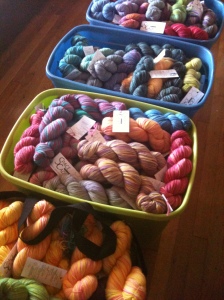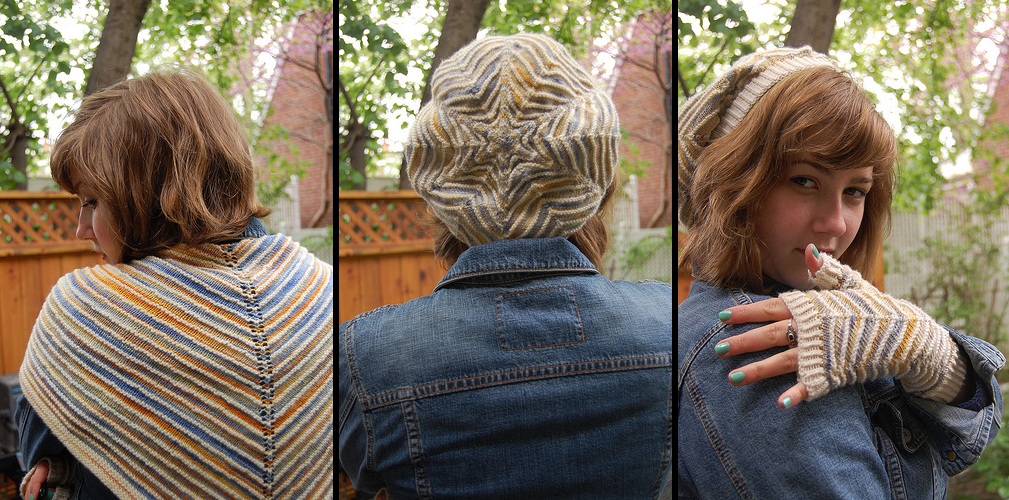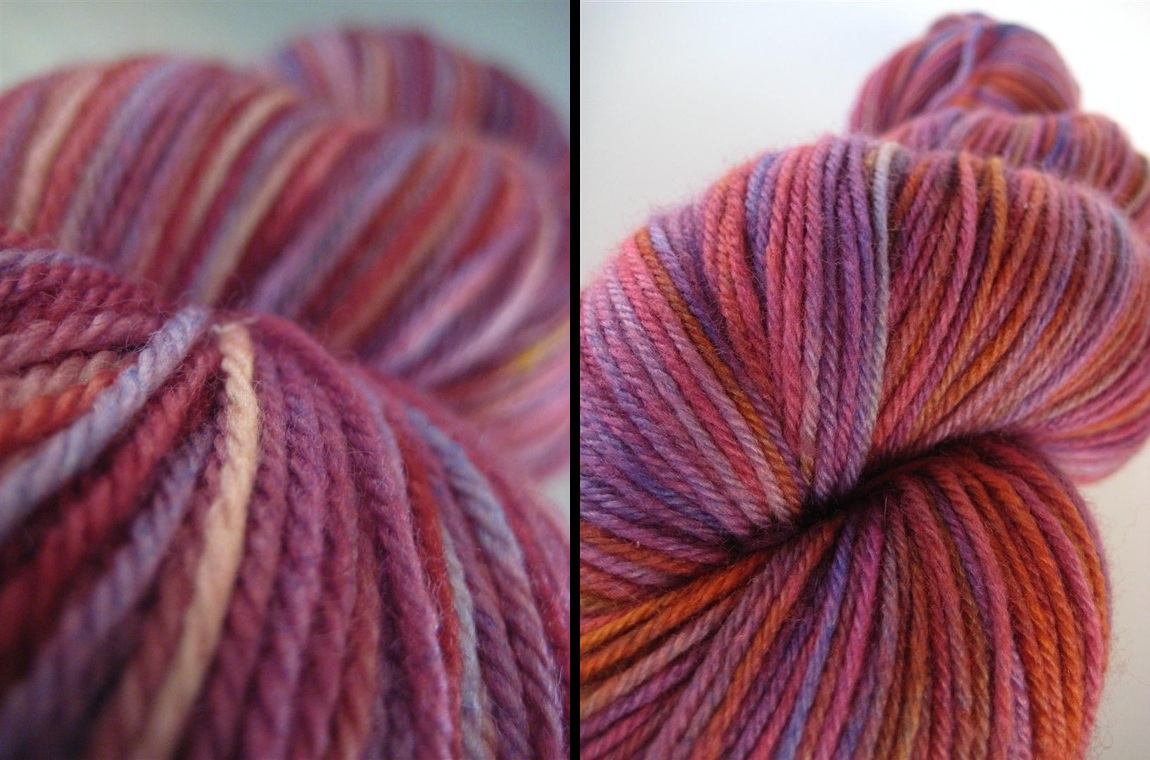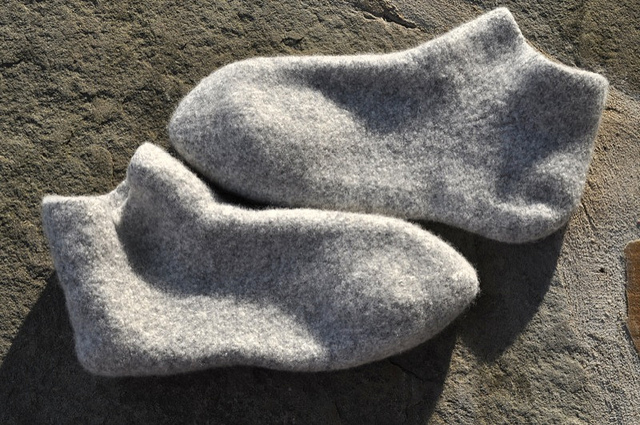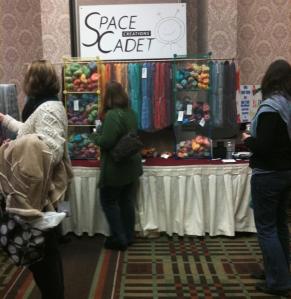
Here’s what I learned:
- How fantastic is it to finally get to meet my customers in person. Seriously, it is the best! These are people I see tweeting, people who leave comments on the blog and on Facebook, but there is nothing like meeting you guys in person, discussing your knitting, seeing your projects, and just being able to put faces to names. Meeting you all was fantastic fun!
- How wonderful it is to talk to customers about my yarns and get that feedback. I mean, I do all this in isolation. Day to day, I work in my studio mostly on my own, with pots simmering quietly and yarns soaking… And when I pull them out, well, sometimes I think a yarn looks great and sometimes I’m not so sure. And it was just such an incredible experience to see customers making a beeline for the colourways that were calling out to them, and to hear their comments and get their feedback. Nothing beats that.
- That every person has their own unique colour style, their own sense of what works for them… and you absolutely cannot judge a knitter or a crocheter by her cover. We had people come up who looked like they might choose calm, quiet colourways but who instead went straight for the brightest, craziest colours. And others whom I thought would go for the same wild yarns but who instead reached straight for the peace and serenity of the semi-solids. The truth is, crafters are unique and interesting people, and you can’t box them into categories!
- That many hands make light work, and work doesn’t feel like work when it’s split out amongst friends. …With HUGE thanks to the Wednesday night knitters for bagging and tagging, knitting samples, brainstorming, and coming up with some great ideas that made the show a lot better for us.
- That there is simply no way to show how beautiful, how smooshy, how fibery-lucious a yarn is over the internet. Great photography is all well and good, but absolutely nothing beats getting to snorgle that yarn in person!
- And, following on from that, that the purples and blues that I absolutely cannot photograph will sell like hotcakes when people can see how lovely they really are!
-
The Vendor Hall was HUGE! That when you get a look behind the scenes, you realise that the Pittsburgh Knit & Crochet Festival is a HUGE undertaking with a bazillion variables that really could all go disastrously wrong, but somehow Barb and her team keep everything under control and pull the whole thing off seamlessly. And they smile the whole time! I don’t know how they do it.
- That you can’t actually go all day without eating.
- Also, you can’t actually go without sleeping either. The body will revolt and shut you down. And that little factoid put a serious dent in my festival-prep schedule.
- What fun it is to meet and finally get to chat with other fiberisti in person (Hello KnitPurlGurl! Hello StevenBe!)
- That StevenBe’s mother and her friend are lovely, lovely women and so interesting that I could have sat and talked to them all day. Hallo Christa! Hallo Barbara!
- That I go a bit giddy when I get asked if I’d like to be a guest dyer for a LYS’s yarn club. YesIwouldYesIwouldYesIwould!!!!
- What an incredible rush it is to asked by LYSs whether I wholesale yarn …and how that plants interesting little seeds in my head.
- That having friends there to show you the ropes, give you tips and ideas, loan you display furniture, and make change when you run out of small bills… that kind of professional camaraderie makes all the difference! (With big thanks to Amy, Bloomin Yarns, CosyKnits, Wren&Rita, and GwenErin)
- How nice it is to be able to bring yarns out of the shop, give them a fresh airing, sell them at the festival, and then have brand new yarns to offer to all my custermers who couldn’t get to this festival. Look for new yarns to start appearing in the shop in the coming days and weeks!
- That you can increase your dyeing by 10 times your normal rate and fill a festival booth with stock in only three weeks, but everything else in your life will come to a complete halt. I really have to get some laundry done before I run out of clothes and some bills paid before they shut off the utilities!
- That none of this is possible without the support of a great team. And I had a great team (With more thanks than I can express to my husband, to Natalie, to meine kleine schwester, and to my mum …and to my dad, who apparently hasn’t eaten in weeks because my mum has been here the whole time!).
- And, finally, that I love love LOVE doing festivals!!!!!



